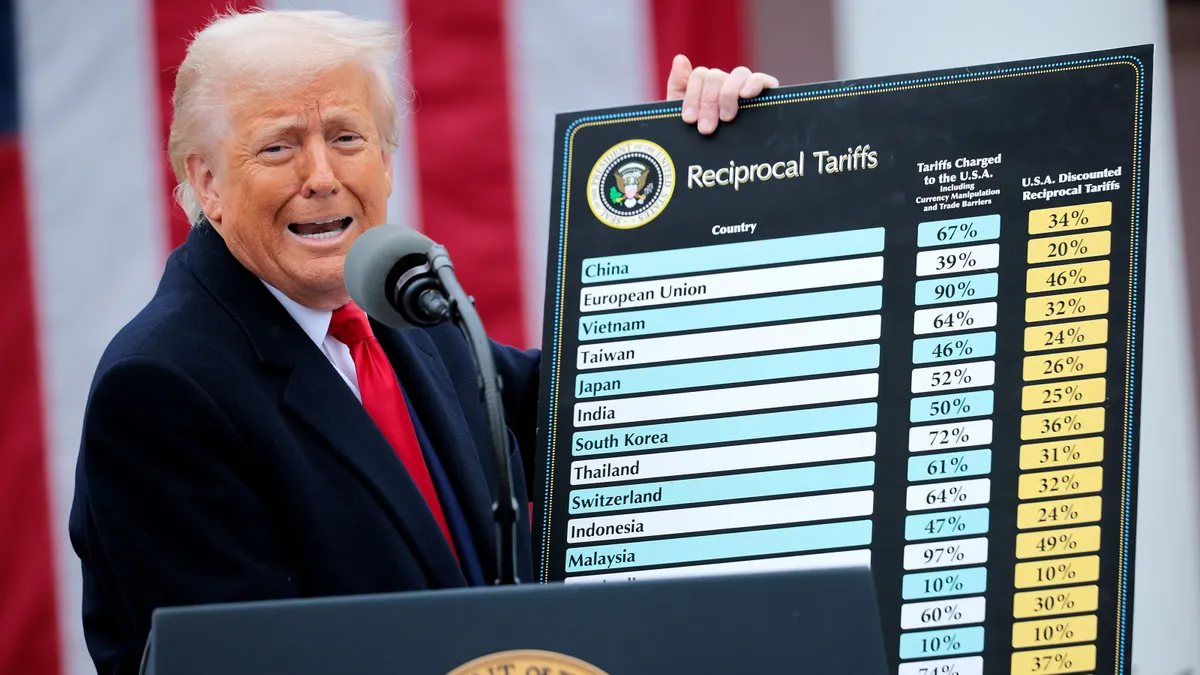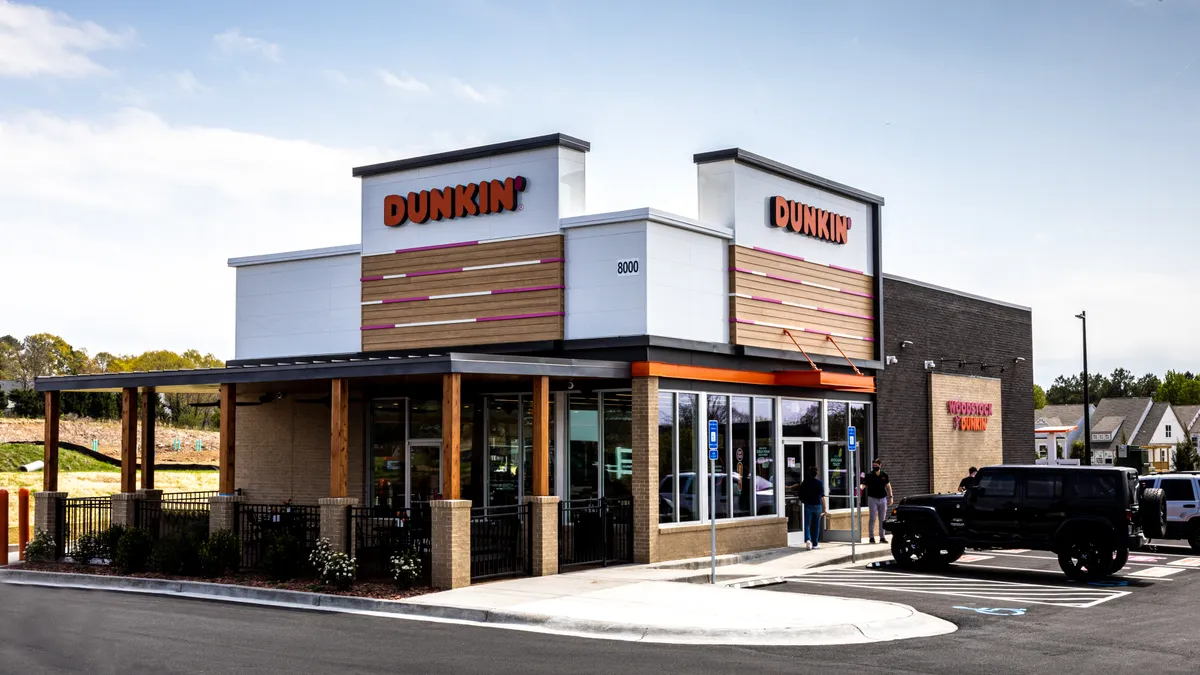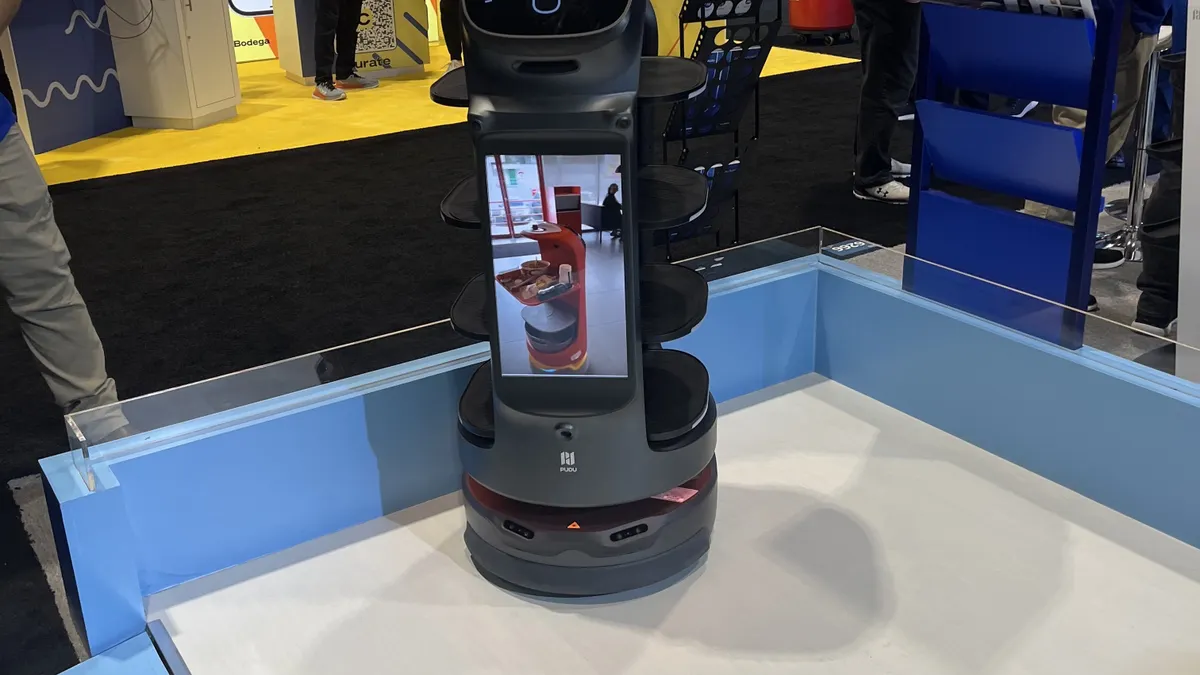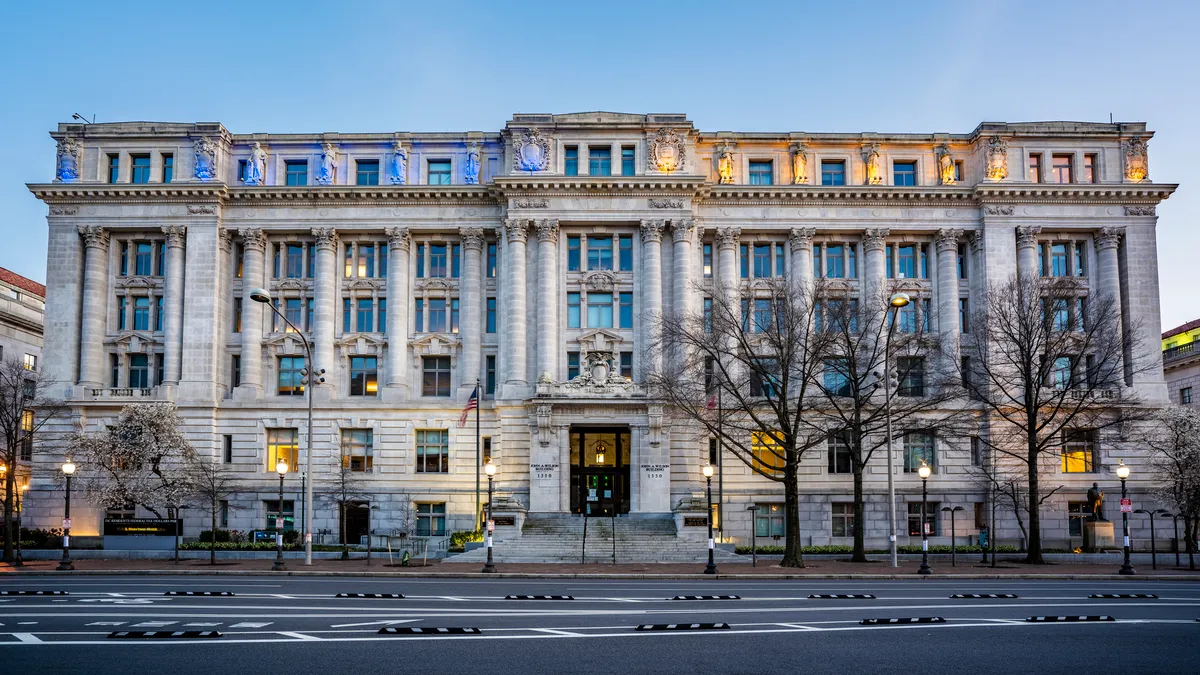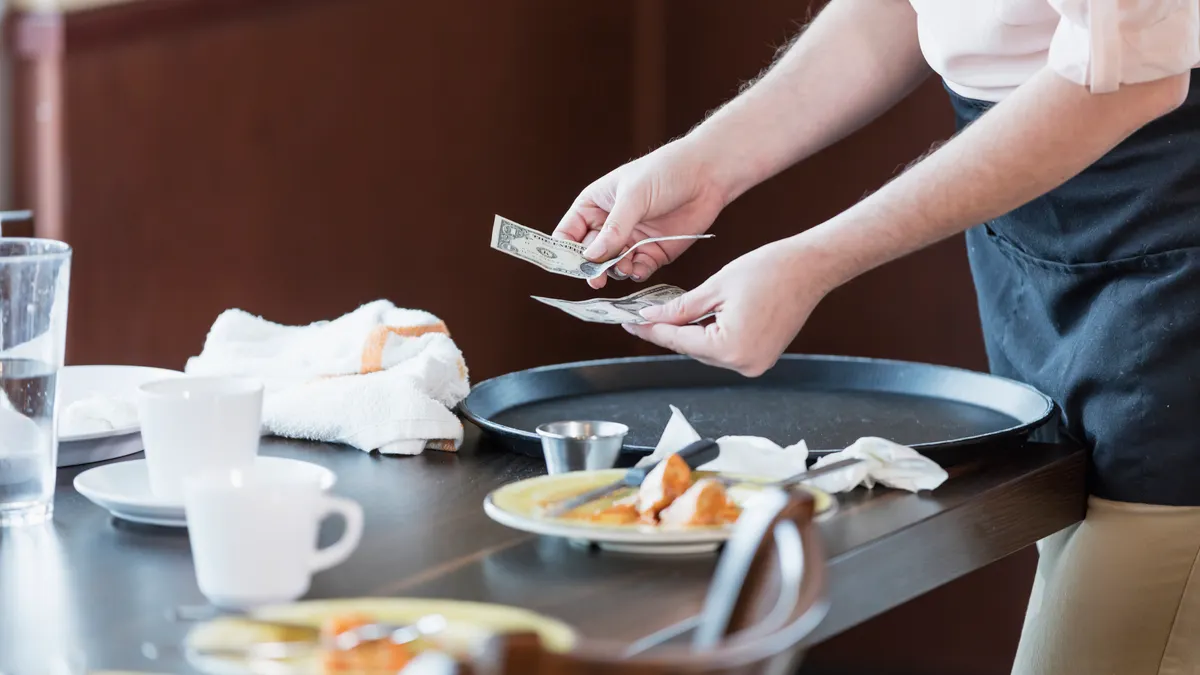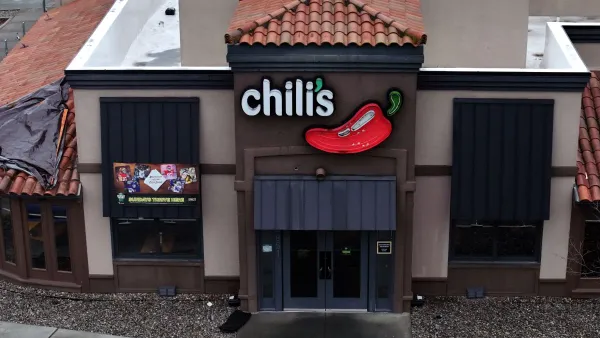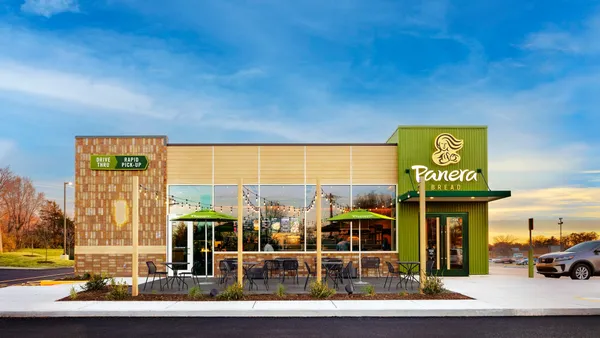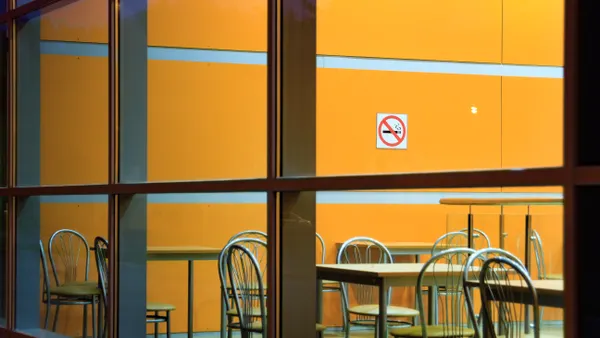Despite pausing so-called reciprocal tariffs for 90-days as of April 9, the U.S. is still maintaining a 10% baseline tariff. That level of taxation on imports across the board will be a significant cost driver for businesses, but less immediately threatening than the country-specific duties floated in early April.
For the restaurant industry, experts say, the baseline tariffs and the potential for renewed, country-specific tariffs pose significant problems.
“The 10% baseline tariffs are not as bad, but still will drag on growth on top of the other tariffs and other factors,” Adam Hersh, a senior economist with the Economic Policy Institute, wrote in an email to Restaurant Dive. “[The White House] only announced a 90 day pause. Maybe the tariffs will return, maybe not. But in the meantime it will leave a pall of uncertainty over investors and consumers.”
Sean Kennedy, the National Restaurant Association’s executive vice president of public affairs, said the 90-day pause had restaurants breathing a sigh of relief.
“They finally have that magic level of certainty of being able to predict: ‘Will I be able to offer this dish on my menu three to six months from now,’” Kennedy said.
Different groups have varying levels of concern about the outcome of the Trump administration's tariff strategy. Here’s what major analyst firms and restaurant groups have to say about potential tariff impact on the industry.
BTIG
In one report from BTIG, analyst Peter Saleh said that tariff exposure had relatively little impact on consumer purchasing in Q1.
In a second note, Saleh said that going forward, tariffs would make restaurant development significantly more expensive.
“We are concerned that a prolonged global trade war could result in significantly higher input costs for anything and everything that goes into building a restaurant including kitchen equipment, HVAC, electrical components etc, which could push development costs higher and returns lower,” Saleh wrote in a research note.
Given the muted sales environment, cash-on-cash returns — especially for struggling restaurant sectors like pizza — are likely to fall in 2025, Saleh wrote.
National Restaurant Association
Kennedy said that the low margins and limited cash reserves of many restaurants mean any lasting disruption of supply, or an extended increase in prices, would hurt the restaurant industry.
“This will have a negative impact if this continues in the medium to long term,” Kennedy said of the tariffs. While the baseline tariffs are less disruptive than the higher, country-specific duties threatened on April 2, they will still put pressure on ingredient costs and the bottom line, Kennedy said.
Kennedy said restaurants have tried to absorb as much of the impact of inflation as possible in recent years, and that an increase in input costs would result in a jump in menu prices at a time of considerable consumer price sensitivity.
Restaurants don’t necessarily have the option of changing suppliers on a whim — food products can only be produced in certain climates — and operators that can’t swap out impacted ingredients for other foods will likely have to trim menus or raise prices. Given the perishability of food products, restaurants can’t stock up meaningfully on most ingredients, Kennedy said.
“Every business is going to tell you that they need certainty and they need predictability. But when you're an industry that has 14 to 16 days of cash on hand, that predictability becomes an absolute necessity,” Kennedy said.
The only other major adjustments operators can make is “to change the business operations in a more conservative way. And that means either less staff, reduced hours, [or] less investment,” Kennedy said.
Ultimately, the solution to tariffs would be a political one, Kennedy said.
“The most effective thing that President Trump could do would obviously be to exempt foodstuffs from these from the tariff hikes,” Kennedy said.
The NRA is in communication with the White House, Kennedy said, about the limited runway available to the industry.
In a follow-up interview about the reduced tariffs, Kennedy noted that while food price expectations have stabilized with the 90-day pause, the cost of equipment will likely see a sharp increase as well.
“Our kitchens are open at least 12 hours a day, seven days a week. That's a lot of wear and tear on our equipment,” Kennedy said. “A lot of that equipment is coming from China. So operators right now, what they're saying is, ‘Do I have the certainty to sign a lease to open my third restaurant in this new neighborhood? Do I have the certainty that I can afford the equipment, I can afford to fill out a kitchen?’”
Independent Restaurant Coalition
Erika Polmar, executive director of the Independent Restaurant Coalition, expects tariffs to significantly impact independent restaurants.
“These impacts tend to disproportionately affect smaller businesses that lack the purchasing power or financial cushion of larger chains,” Polmar wrote in an email. “We’re especially concerned about the compounding effect tariffs could have when layered on top of existing challenges like rising food costs, labor shortages and insurance premiums.”
To survive such market volatility, independent operators may need to reevaluate their vendor contracts, explore group purchasing cooperatives “and work more closely with their suppliers to forecast and plan for pricing shifts,” she said.
Menu adjustments can help provide some cushion, as well, Polmar suggested. By sourcing local products that are more insulated from trade disruptions, restaurants can better control their costs and appeal to diners who seek out sourcing sustainability and transparency, she said — a move that could improve a business’ value proposition.
“Transparency with customers — whether through modest price increases or service charge adjustments — can also help maintain financial stability,” she added. “Ultimately, many small restaurants need policy support to navigate these headwinds, and the IRC continues to advocate for small business protections in Washington, D.C.”
Placer.ai
Placer.ai echoed concerns that tariff-induced price hikes would exacerbate consumer price sensitivity.
"Tariffs could pose new challenges for restaurant operators,” said R.J. Hottovy, head of analytical research at Placer.ai. “There have been several recent instances of pushback against surcharges implemented to offset rising food and packaging expenses.”
“Additionally, tariffs on key menu items such as seafood, avocados, chocolate, coffee, and spirits could lead to supply disruptions and may force operators to reassess their menu mix in the coming months."
Circana
David Portalatin, senior vice president and food industry advisor at Circana, said it will be difficult to gauge whether tariff-induced pricing changes trickle down to impact individual menu items.
“The distribution channel has enough complexity in it that I think that'll be hard to measure,” he said.
“I think what the bigger issue is is that we have seen consumer sentiment play a heavier role in consumers’ willingness to spend at restaurants than in the past. And so if consumers become discouraged, or if they perceive that tariffs are going to be harmful to them, that could present a larger headwind to the restaurant space.”
Currently, Circana hasn’t observed such impact, he said.
“In fact, restaurant transactions are actually improving throughout the month of March, so things are actually accelerating a little bit.”
Economic Policy Institute
Adam Hersh, a senior economist with the Economic Policy Institute, said the tariffs pose a dual threat of a supply shock and a demand shock. The former, Hersh said, would be due to increased input costs, and the latter due to consumers’ subsequent reduced propensity to consume. The tariffs’ impact — combined with reduced federal expenditures, increased deportation of undocumented workers and looming cuts in the budget reconciliation process — could produce a profoundly damaging macroeconomic environment for restaurants, Hersh said.
“[The Trump administration] is kind of creating a perfect storm of recessionary forces, that is a totally unnecessary, unforced error here. It's going to be very costly,” Hersh said.
Initially, service industries like restaurants will be more insulated than manufacturing industries, but the breadth of the tariffs means the whole economy will be hit, eventually, Hersh said.
“Services still embody a lot of manufactured goods. That will mean higher costs for restaurant owners and managers on everything from flatware and furniture to foodstuffs and building supplies,” Hersh said.
As prices rise, Hersh said, the industry is likely to see a continued traffic shift from fine dining and full-service to fast casual and QSR, and a shift within restaurant menus too, with consumers favoring fewer, cheaper items.
Increased prices during a period of contraction makes it more difficult for monetary policy — such as actions by the Federal Reserve to lower interest rates — to stimulate the economy.
“So there's a risk that we'd be in this stagflation environment, and that's a really challenging thing for the Federal Reserve to manage with monetary policy,” Hersh said.
Even if the tariffs lead to a surge in manufacturing in the U.S., that won’t lower prices because of higher domestic input costs, Hersh said.
Restaurants and businesses outside the U.S. are vulnerable, too. The U.S. acts as a “consumer of last resort,” for the world economy, Hersh said, absorbing excess production from other countries and dampening the effects of overinvestment and business-cycle downturns. This trade deficit helps underpin the power of the U.S. dollar.
“The President and his advisors are explicitly trying to disrupt this structure of global production,” Hersh said. “This can be achieved, but [these tariffs are] a very inefficient and costly way to achieve it, it's not clear that we'll be better off as a national economy from doing it this way.”
Hersh said that the idea of using tariff revenue to offset domestic taxation and invest in domestic industry — which the NRA said could be a potential upside from tariffs — is based on a flawed understanding of the impact of tariffs. The revenues raised, Hersh said, would be insufficient to meet revenue needs.
“If the tariff works to keep out foreign goods, then we don't collect those tax revenues if we're not importing them,” Hersh said. “If we do collect the tariff revenues, that means the domestic industry is not getting the boost that [the White House] is intending because we're still buying those foreign goods.


